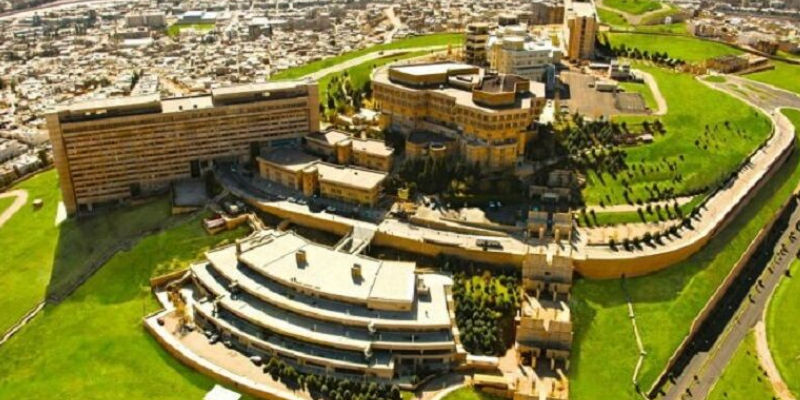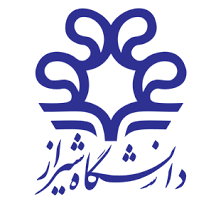

Shiraz University
overview
Shiraz University was established in 1946 with the founding of the School of Health, aimed at training specialists in medical sciences through a four-year program. In 1949, this school evolved into the School of Medicine and the Namazi School of Nursing. By 1955, the Schools of Agriculture, Arts, and Sciences were also launched. Shiraz University, known as Pahlavi University before the Islamic Revolution, formally took shape in 1954 with the addition of the Schools of Engineering and Veterinary Medicine.
Shiraz University has become a prominent destination for international students in Iran, offering various academic programs that attract scholars from around the world who seek to study in Iran. Due to the significant contributions of the University of Pennsylvania to Pahlavi University, the president of the University of Pennsylvania awarded an honorary degree to Shiraz University. After an invitation from Mohammad Reza Pahlavi, the president of the University of Pennsylvania, to visit Iran, Shiraz University came under the supervision and management of the American institution.
This collaboration led to the establishment of academic and cultural connections between the two universities, which continued until the final days of the Shah's regime. In 1962, Isa Sadiq implemented Ivy League-inspired models at Pahlavi University. The partnership resulted in the development of curricula, campus design and expansion, faculty training, and the establishment of research institutes at Pahlavi University. During Houshang Nahavandi’s tenure, Kent State University also played a pivotal role in the university's growth.
With a history spanning over half a century, Shiraz University is one of the largest and most prominent universities in the country and serves as a national research hub. It boasts 670 faculty members and over 16,000 students, including international students in Iran who choose Shiraz University as a leading destination to study in Iran.
As a leading institution, Shiraz University successfully established other universities and higher education centers, including Hormozgan University, Bushehr University, Yasouj University, Shiraz University of Technology, Kazerun Higher Education Center, and the Darab Faculty of Agriculture and Natural Resources. These institutions now operate independently. Additionally, Shiraz University oversees the supervision and evaluation of 166 universities and higher education institutes in Fars Province.
Shiraz University Ranking
Shiraz University has secured the top ranking in Iran for its exceptional performance in teaching computer science, making it a popular choice for international students in Iran seeking quality education. The university is also a leading destination for those looking to study in Iran, being internationally ranked #691-700 in the QS World University Rankings 2025 and 801-1000th in the THE Rankings 2025.
Shiraz University Admission
Required Documents:
- A clear, high-resolution scan of the applicant's passport bio page.
- The passport must be valid for at least six months and have two blank pages.
- A recent passport-size photo (3x4 cm, maximum 50 KB).
- The latest academic certificate or transcript (must not exceed 100 KB).
- (If applying for admission to pursue an academic degree, the high school diploma and/or transcript must be certified by the Iranian Embassy in your home country.)
- An updated résumé (maximum 100 KB).
Please ensure that you inform the university of your arrival date and time and specify whether you require airport pickup. This can be arranged a few weeks before your departure. The university will reserve your preferred accommodation and, if needed, arrange for your pickup at the airport. Upon arrival in Shiraz, your first steps will include visiting the Office of International Student Affairs to:
- Meet with university representatives in person.
- Complete your registration process.
- Attend an orientation workshop to familiarize yourself with various university departments.
Eligibility Requirements for Applicants:
General Conditions:
- Possession of a valid foreign passport (applicants must not hold Iranian citizenship).
- Approval from the Student Affairs Organization confirming no legal restrictions for the applicant to continue their studies at the respective university. (This approval is obtained after completing the admission application on the organization's website and the system for non-Iranian students.)
- Approval from the Student Affairs Organization confirming the applicant's general qualifications. (This involves correspondence and obtaining approval from relevant authorities in accordance with the laws and regulations of the Islamic Republic of Iran.)
Specific Conditions:
- Submission of the latest academic certificate (final diploma) obtained in the applicant's home country, along with a complete transcript of grades, to apply for admission to a higher academic level.
- All required documents (academic certificates and transcripts) must be translated into Persian and English, certified, and verified by the Iranian Embassy or Consulate.
- Admission to all academic levels is subject to the approval of the Academic Vice President and the relevant department within the university. For doctoral applicants, departmental approval, an interview, and the selection of an academic supervisor are mandatory.
- Completion of a Persian language training program at the Persian Language Teaching Center is mandatory before enrolling in the desired department and field of study. Applicants wishing to study in English must undergo an interview (language proficiency assessment) and receive approval from the respective department.
- All admitted students without a Persian language certificate (except Afghan nationals) must take the Persian Language Proficiency Test at the Persian Language Center. Those who do not meet the requirements must attend Persian language classes in the first semester.
Shiraz University Tuition Fees
Shiraz University offers diverse opportunities for international students in Iran, with tuition fees structured into three categories: Group 1 (government-sponsored), Group 2 (self-sponsored), and Group 3 (students from Yemen and Afghanistan, as well as online students from the School of E-learning).
For those planning to study in Iran, Persian language courses are available, with fees ranging from $470 to $850 USD. Semester tuition varies by program and group, with undergraduate fees between $390 and $900 USD, master's fees from $450 to $1000 USD, and doctoral fees from $620 to $1500 USD.
Programs in fields such as science, arts, agriculture, and veterinary medicine generally have higher tuition rates. Additionally, international students in Iran can expect semester fees of $280 USD for meals and $320 USD for dormitory accommodation.
 Sign In with Google
Sign In with Google